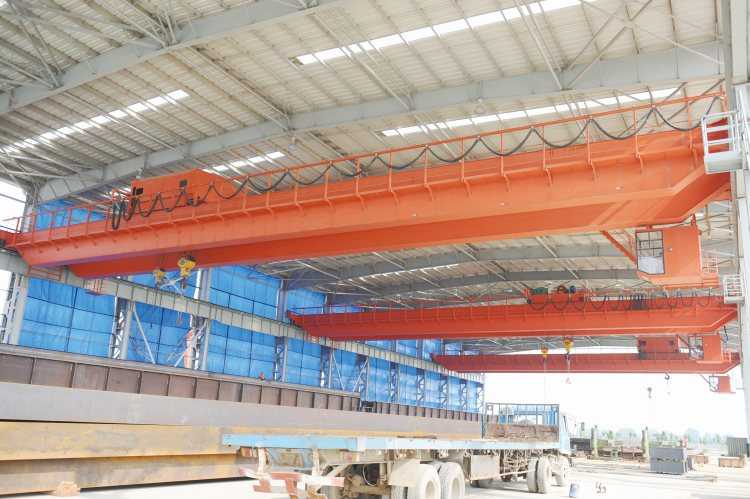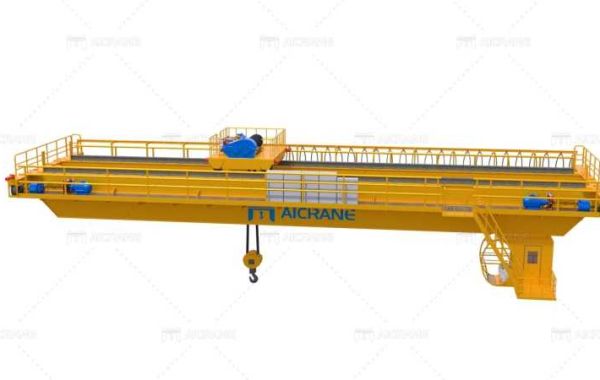In today’s competitive manufacturing landscape, controlling operational costs is crucial. Heavy lifting and material handling are integral to production, but they often come with high costs, particularly if operations rely on less efficient or outdated equipment. A 40 ton bridge crane is a robust and versatile solution that can play a significant role in reducing these costs. This article explores how a 40-ton bridge crane can boost productivity, cut down expenses, and enhance safety in manufacturing environments.

Enhanced Efficiency and Productivity
One of the most impactful ways a 40 ton bridge crane can lower operational costs is by increasing efficiency on the production floor. These cranes are designed to handle heavy loads with precision, making them ideal for lifting and moving large quantities of material in a single motion.
By reducing the time it takes to move materials across the facility, a bridge crane allows operators to manage workflows more quickly and with fewer disruptions. In turn, this leads to greater productivity per shift, allowing manufacturers to meet higher production targets without adding shifts or increasing labor costs. Additionally, when materials are moved seamlessly and consistently, it eliminates bottlenecks that would otherwise delay production and waste resources.
Reduced Labor Costs
Traditional material-handling processes often rely on multiple workers to move heavy loads safely, which can lead to increased labor costs. With a 40 ton bridge crane, fewer workers are needed to perform these tasks, allowing the company to reallocate manpower to other areas of production.
Additionally, cranes reduce the physical strain on employees, lowering the risk of injuries that could lead to workers' compensation claims and downtime. By streamlining the handling process with a bridge crane, manufacturers can optimize their workforce and reduce associated labor expenses.
Minimized Equipment Wear and Tear
Heavy-duty forklifts and other ground-based machinery often experience considerable wear and tear when used to transport large loads across long distances. Forklifts, for example, are prone to tire wear, hydraulic leaks, and other issues that require frequent repairs and maintenance. In contrast, a bridge crane operates on an overhead system that minimizes physical strain on the machine itself.
Over time, reducing reliance on ground-based machinery can lead to a decrease in maintenance and replacement costs. A well-maintained 40 ton bridge crane is designed to last for years and is generally more durable than other lifting equipment in manufacturing environments. With less wear and tear on equipment, manufacturers can reduce unplanned downtime and extend the service life of their machinery, which further lowers operational costs.

Energy Savings
Bridge cranes are often more energy-efficient than traditional material-handling equipment. For instance, moving a load via a crane is generally more energy-efficient than using multiple forklifts. Many modern bridge cranes are equipped with energy-saving features, such as regenerative braking, which captures and reuses energy during the lifting and lowering process.
Over time, these energy savings can accumulate, resulting in lower utility bills and contributing to a more sustainable and eco-friendly operation. Additionally, with energy-efficient equipment, manufacturers can improve their overall carbon footprint, an increasingly valuable benefit as businesses are held to higher environmental standards.
Improved Safety and Reduced Liability Costs
Safety is a top priority in any manufacturing facility, and bridge cranes contribute to a safer working environment. With a 40 ton bridge crane, operators can lift and move heavy materials safely and with minimal manual handling. This reduces the risk of workplace accidents, which in turn reduces liability and potential compensation costs.
Bridge cranes come equipped with advanced safety features, such as anti-sway technology, load monitoring, and emergency stop functions. These features help ensure that loads are moved securely, minimizing the risk of accidents that could halt production or result in damage to equipment and goods. By lowering the chances of workplace accidents, bridge cranes can also improve worker morale and reduce turnover, as employees feel more secure and valued in a safer workplace.
Optimized Space Utilization
A bridge crane operates overhead, freeing up valuable floor space that would otherwise be occupied by ground-based lifting equipment. This is particularly beneficial for manufacturers looking to maximize their facility’s usable space. With a 40 ton bridge crane, materials are transported overhead, allowing the ground level to be used for other critical tasks or to store additional materials and equipment. This optimization reduces the need for facility expansions and renovations, resulting in additional cost savings.

Quick Return on Investment (ROI)
While the initial investment for a 40 ton bridge crane may be substantial, the long-term cost savings it offers can lead to a rapid ROI. By increasing productivity, lowering labor costs, reducing equipment maintenance expenses, and optimizing energy use, the crane quickly pays for itself. Many manufacturers see a return on their investment within the first few years of operation, particularly if they implement preventive maintenance strategies to keep the crane running smoothly.
Conclusion
A 40-ton bridge crane offers a multitude of advantages for manufacturers looking to reduce operational costs and improve efficiency. From enhanced productivity and reduced labor requirements to lower maintenance costs and improved safety, this equipment is a valuable investment. By streamlining material handling and optimizing space, manufacturers can achieve greater output with fewer resources, ultimately contributing to a more profitable operation.








